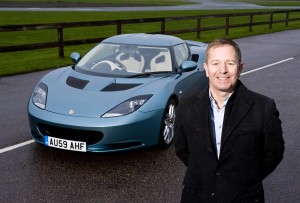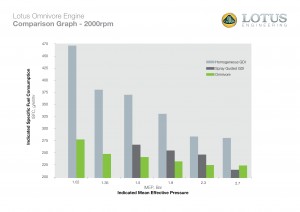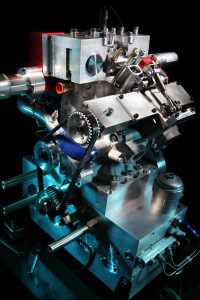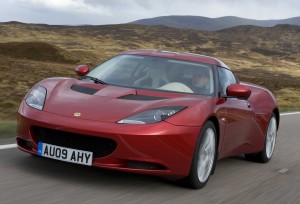
Lotus F1 Racing has today confirmed that Italy’s Jarno Trulli, Finland’s Heikki Kovalainen and Malaysia’s Fairuz Fauzy have joined the team to spearhead driving duties for its debut Formula 1 season in 2010.
There has been much speculation surrounding the identity of Lotus F1 Racing’s driver signings in recent weeks, but the appointment of Jarno, Heikki and Fairuz was made formal in an official announcement by Malaysian Prime Minister Dato’ Sri Najib Tun Razak in Kuala Lumpur this afternoon, at which Jarno, Heikki and Fairuz were also present.
35-year-old Trulli is one of the most experienced, consistent racers in Formula 1 and unquestionably still one of the fastest men over a single lap. He is one of just a select few drivers to have tasted victory in Formula 1, and that at the jewel in the crown of Formula 1 racing, the Monaco Grand Prix. He has also finished in the top ten of the drivers’ Championship table on seven occasions.
Heikki’s F1 career began in 2006 when he made his debut as a test driver. His appointment to the Lotus F1 Racing team will see the 28 year old Finn starting his fourth season in the Formula 1 World Championship and he brings with him a race winning reputation, confirmed by his first victory in Hungary in 2008, and a wealth of experience that will make a potent combination with fellow race driver Jarno Trulli and Fairuz Fauzy.
27-year-old Fauzy joins the team having previously held a Formula 1 testing role for the Spyker squad back in 2007. Since then he has driven in the F1 feeder series GP2, the World Series by Renault, as well as being named as lead driver for Malaysia’s involvement in the A1GP Championship.
It is a reflection of the determination and status of Lotus F1 Racing to return to Formula 1 that they have hired two race winning drivers for the debut season.
TONY FERNANDES – TEAM PRINCIPAL
“I am thrilled that we have been able to sign Jarno, Heikki and Fairuz to drive for Lotus F1 Racing in our debut season. The appointment of Jarno, Heikki and Fairuz as our race drivers is a testament to the quality of our team, to our ambition and drive, and above all to our long-term vision of success in Formula 1. Jarno and Heiki are winners and have proven track records in Formula 1, and will be a big asset to us as we look to develop the team and the car throughout 2010. Jarno and Heikki are two extremely versatile drivers who have proven themselves more than capable of achieving solid results no matter how tough the conditions. Having Fairuz on board is also great news. He is undoubtedly the best Malaysian senior driver at the moment and it is a pleasure to welcome him into Malaysia’s Formula 1 team. We only secured our 2010 entry from the FIA in September and already we have our first car in production and have signed two Formula 1 race winners to drive for us, as well as a home-grown Malaysian driver. Not bad for three months’ hard work! There is more to come from us and we head into the holiday period buoyed by what we have accomplished already but inspired to push the boundaries yet further.”
JARNO TRULLI – LOTUS F1 RACING DRIVER
“It is a privilege for me to sign for the new Lotus F1 Racing team. I have been impressed by the long-term vision of the team management and technical staff. Tony has set out very ambitious plans and I am ready to help the team achieve these high targets. I am also pleased to be back working alongside Mike Gascoyne, someone with whom I have enjoyed previous success at other teams. I get on very well with him and I respect his working style. Lotus is a truly iconic and inspirational brand and it is great that the name is back in Formula 1. We will be hoping to draw inspiration from the heritage of Lotus for our team.”
“I am also delighted to be racing alongside Heikki, someone who I have enjoyed racing against since 2007, and someone else, like me, who brings valuable experience from his time with two of Formula 1’s most established teams. I believe that together, we are among the most competitive pairings on the grid, and we will be determined to bring success to Lotus F1 Racing to repay the faith that Tony and the team have shown in us.”
“The fact that the team is Malaysian gives us all an extra responsibility because we will be carrying the hopes of a nation on our shoulders, but we will give the absolute maximum to reward their loyalty and trust. I am here to win; I will fight for the team and for Malaysia. Every proud Malaysian should be behind the team.”
HEIKKI KOVALAINEN – LOTUS F1 RACING DRIVER
“It’s fantastic to be joining Lotus F1 Racing and I am excited about the challenges that lie ahead. I recently visited our factory in Norfolk, UK, and was so impressed by seeing how far the team has come in such a short time since it was launched in September, and by how determined everyone is to meet Tony’s ambitious targets. I knew immediately it would be a fantastic opportunity to help them achieve their goals.”
“I believe that appointing two drivers with the experience Jarno and I have shows how determined the team is to go racing in a truly competitive way, and our pairing sends out a very strong message to our competitors.”
“I’m also excited to be part of a team that is not only bringing back the Lotus name, one of the most iconic teams in any form of global motorsport, but also doing so with the support and backing of Malaysia, a country I fell in love with when I first raced there in 2007. I can’t wait to begin working with Tony, Mike and the team they are putting together, and I’m really looking forward to seeing the welcome we will be given by Formula 1 fans around the world as we bring Lotus F1 Racing to the grid.”
FAIRUZ FAUZY – LOTUS F1 RACING DRIVER
“There is no greater honour than having the chance to drive for your country. I was given the opportunity to do that for A1 Team Malaysia in A1GP for a couple of years, but to have the chance to join Malaysia’s first fully fledged Formula 1 team is very special for me and the highlight of my career so far. I look forward to working closely with Jarno and Heikki on developing the car and the team in our first season together in Formula 1. I am sure we can do Malaysia as a nation proud, as well as upholding the tradition of such a legendary F1 name such as Lotus. Furthermore I look forward to developing as a driver in Formula 1 with the team in the future.”
DRIVER PROFILES
JARNO TRULLI PROFILE
Jarno made a fighting start to his Formula 1 career when he joined the Minardi team in 1997, but after just seven races he was asked to replace the injured Olivier Panis at Prost where he made an immediate impact. He finished fourth in the German GP and led the Austrian GP until he was cruelly denied a sensational podium finish with an engine failure. Nonetheless, Jarno had made his mark and stayed at the Prost team for a further two seasons. Results were not forthcoming but he claimed his first career podium with a fine drive to second place in the wet European GP in 1999. The result was something of a fitting farewell to his time at Prost as Jarno joined the Jordan Grand Prix squad for the new Millennium.
It was another barren period for Jarno in terms of podium results but a handful of fourth places and some sublime qualifying performances attracted the attentions of the Renault team for 2002. His first year at the French manufacturer alongside Jenson Button did little to improve upon his previous results but in 2003, with the team’s technical department led by Mike Gascoyne, he was given a more competitive car with which to show his full potential. Racing alongside Fernando Alonso, Jarno returned to the podium for the first time since his Prost days with third place in the German GP at Hockenheim. The result gave Jarno renewed confidence and paved the way for Jarno’s breakthrough season in 2004.
Once again partnering Alonso, Jarno attained regular points and podium challenges before taking a breathtaking victory around the streets of Monte Carlo. Jarno had established himself as one of the men to beat but midway through the year relations with his team had started to deteriorate and towards the end of the year he opted for a surprise switch to Toyota with whom he would stay until 2009.
In his five-and-a-bit seasons with Toyota Jarno put in some incredible performances both in qualifying and in races. In his first full season with the team in 2005, with Mike Gascoyne at the technical helm, he was one of the Championship leaders in the early races taking Toyota’s first ever podium results in Malaysia and Bahrain. Toyota’s competitiveness dropped off after Gascoyne’s departure from the team in 2006 and Jarno was only able to fight for occasional points finishes until a reversal of fortunes in 2008. His scored his first podium in three years at the French Grand Prix and Toyota were one of the teams to beat in the first races of 2009. Jarno took an incredible pole position in Bahrain but a miscalculated race strategy prevented him from converting it into the team’s maiden victory. Nevertheless, with two podiums from the first four races and a highly competitive second place in the team’s home race in Japan, Jarno ended the season – what would be Toyota’s final in Formula 1 – with some career-high performances.
Incredibly, the 2010 season will mark Jarno’s 14th season in Formula 1 but he shows no signs of slowing down. By joining Lotus F1 Racing, Jarno has the chance to rejoin Mike Gascoyne and to spearhead a brand new team into Formula 1. His vast experience racing at the pinnacle of motorsport and his respected reputation as a team-player will be vital characteristics to the new Lotus F1 Racing team as they fight their way up the grid during 2010.
HEIKKI KOVALAINEN PROFILE
Heikki started his motor racing career karting in the early 1990’s. His first recognition came with second place in the Finnish Formula A Championship in 1999 and 2000. That year also saw Heikki add the Scandinavian Championship and the Elf Masters, held at Paris Bercy, to his achievements, earning him title of Karting Driver of the Year in his native Finland.
Heikki’s success saw him move up to the British Formula Renault Championship in 2001, bringing two wins, two poles and three fastest laps, enough to give him fourth place in the Championship, plus the 2001 Finnish Automobile Sports Federation “Rookie of the Year” award. That same year, Heikki made his F3 debut at the world renowned Macau Grand Prix, finishing 8th.
In 2002 Heikki moved on to compete in the British F3 Championship, scoring an impressive five wins, three poles and three fastest laps, securing his third position in drivers’ standings. He was once again given the “Rookie of the Year” award, and won the prestigious F3 support race at the British Grand Prix. He capped an impressive year by finishing second in Macau and fourth at the Marlboro Masters at Zandvoort.
In 2003 Heikki competed in the World Series by Nissan: a win and two poles were enough to get second place in the Championship. That same year he also made his F1 test debut, driving the Renault R23 at Barcelona and the Minardi Cosworth at Vallelunga two weeks later.
2004 brought more success for Heikki, securing the World Series by Nissan Championship. Driving for the Pons Team he crushed the opposition, with six wins, nine poles and ten fastest laps to his name, competing alongside Tiago Monteiro, Enrique Bernoldi and Narain Karthikeyan. As a member of the Renault Driver Development Program Heikki assisted with the development of Renault’s Championship winning R24, adding to his growing F1 experience.
Stade de France, Paris, was the venue for the season ending Race of Champions in 2004. Alongside Marcus Gronholm, Heikki represented Finland in the Cup of Nations, where he and his team mate took the runner-up spot. However, the top step of the podium did not elude him long, with Heikki winning the coveted Champion of Champions title by beating 2004 World Rally Champion Sebastian Loeb and seven times Formula 1 World Champion Michael Schumacher in front of a packed stadium.
In 2005 Heikki moved up to GP2, taking part in the inaugural series with Arden Motorsport. His impressive development continued, finishing second overall in the series, securing five wins and two poles along the way.
2006 saw Heikki make the step up to the very pinnacle of world motorsport, replacing Frank Montagny as the Renault F1 Team’s third driver. A series of impressive displays in testing saw him achieve his primary Formula 1 goal, with the announcement he had been promoted by the Renault F1 Team to a full-time race seat for the 2007 season.
Pitted against the vastly experienced Giancarlo Fisichella, Heikki enjoyed an excellent debut season in 2007, out-performing and out-scoring his team-mate, becoming second best rookie of the season after Lewis Hamilton and taking a very credible seventh place in the final Championship standings.
These achievements did not go unnoticed, and in December 2007 Team Vodafone McLaren Mercedes announced Heikki as team-mate to Lewis Hamilton, a position he held for the 2008 and 2009 seasons, until today’s announcement of his appointment to Lotus F1 Racing. 2008 saw Heikki claim both his first pole position, at the British Grand Prix at Silverstone, and his first race win, at the Hungarian Grand Prix, where he became the 100th driver to win a Formula 1 Grand Prix.
FAIRUZ FAUZY PROFILE
Mohamed Fairuz bin Mohamed Fauzy was born on 24 October 1982 in Kuala Lumpur, Malaysia. From an early age, Fairuz began displaying a natural aptitude to speed. As a child, when most other kids his age were watching cartoons or playing with their friends, Fairuz could be found on a go-kart circuit.
By the age of 12, he was already competing with senior drivers in international races. In 1995, Fairuz, 13, clinched his first victory in one of the Championships – the Formula TKM Race in Buckmore Park, England, which became the base from which he would launch his bid for Formula 1.
A host of other Championships followed, including 5 times consecutively reigning champion of the ASEAN Kart Prix from 1996-2000. In 2000, Fairuz moved to the UK to participate in his first international single-seater series – Formula Ford Zetec Championship. After that time, he participated in numerous races such as the British Renault Sport Winter Series, British Formula Renault Championship, British Formula 3 Scholarship Class and British Formula 3 Championship Class.
Fauzy moved to the GP2 Series in 2005, signing with the DAMS team and becoming the first Malaysian and one of only a number of Asian drivers in the Championship. Fairuz then contested the Championship in 2006 with the Super Nova International Racing team. During this period, he was also one of the A1 Team Malaysia’s drivers alongside Alex Yoong in the A1GP.
After GP2, Fauzy was confirmed as Spyker F1’s test and reserve drivers for 2007. He also participated in World Series by Renault in 2007 with Cram Competition team and in 2008 with Fortec Motorsport. Additionally, in 2008, he participated in GP2 Asia Series driving for the Super Nova team. He became the number 1 Asian driver after finishing fourth out of 26 drivers in the Championship.
Fairuz was the nominated first driver for A1 Team Malaysia in the 2008/09 season and participated in the World Series by Renault for MofazFortec Motorsport, the first Malaysian motorsport outfit in the Championship, finishing the season in second place with an impressive 98 points and one race win.
THE LOGO
The new Lotus F1 Racing logo has been developed to represent the teams future and heritage. We have designed a typeface which is progressive and bold, yet instantly fitting with the teams long and successful history. Taking clues from the iconic Jim Clarke Type 49 the new ‘DNA’ device uses the Lotus colours in a recognizable form which is extremely flexible and will become a key element of the new team brand.







